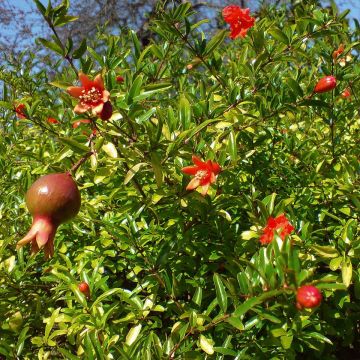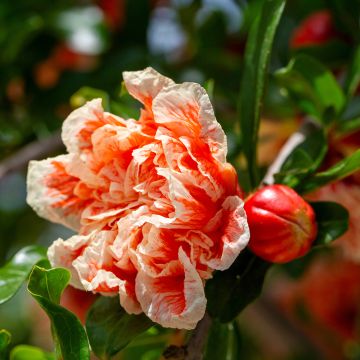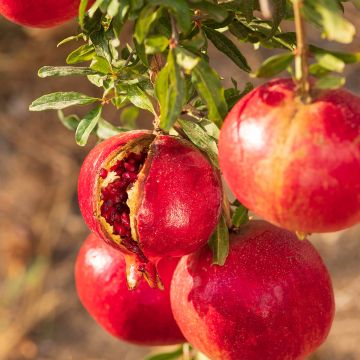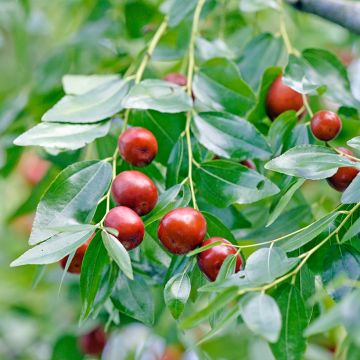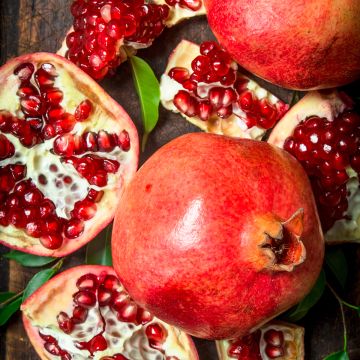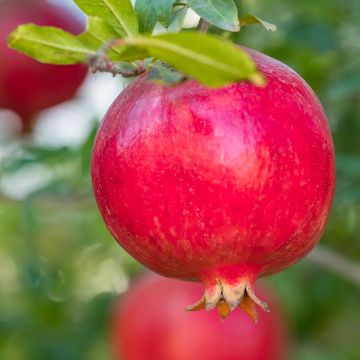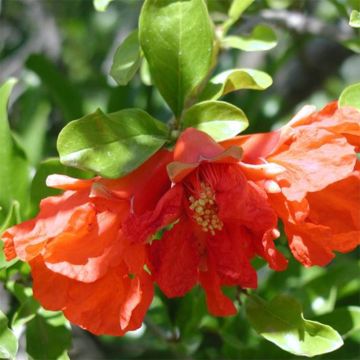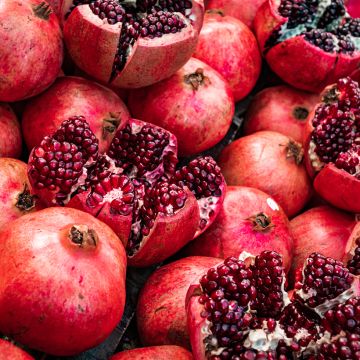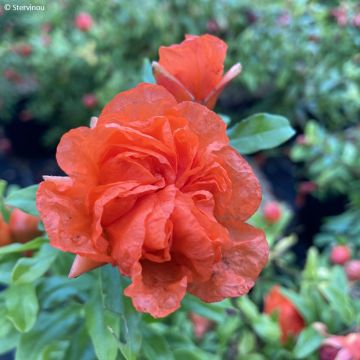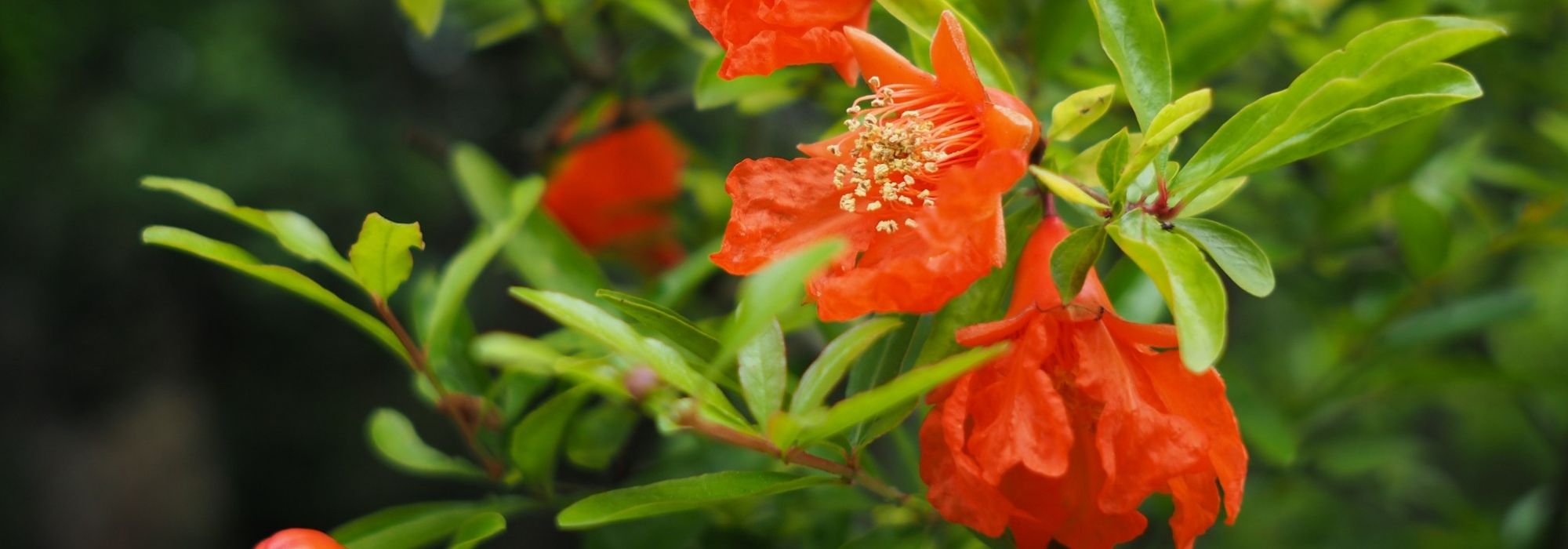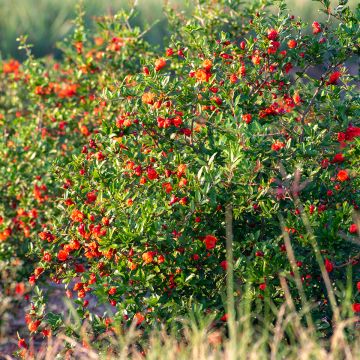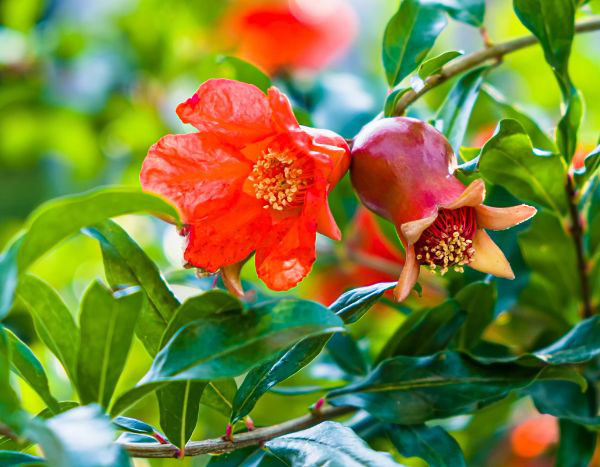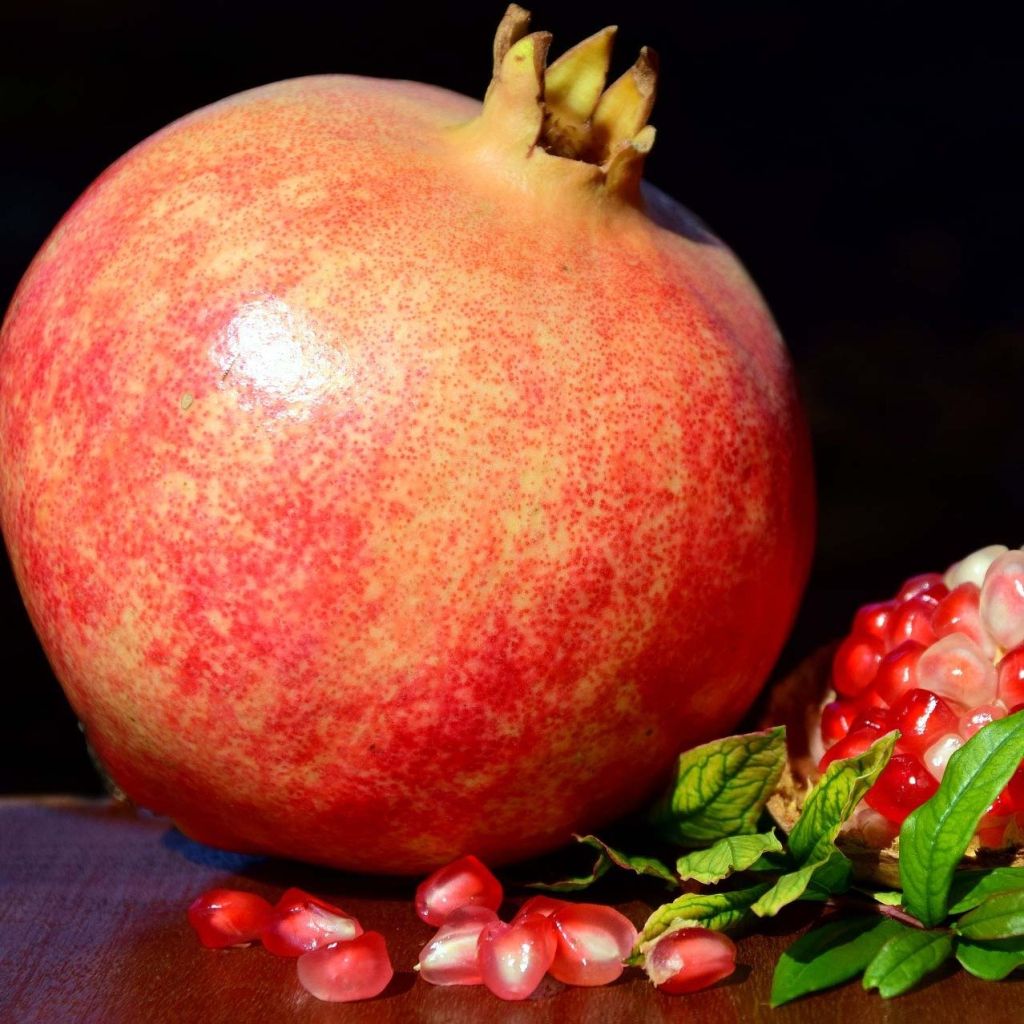

Grenadier à fruits - Punica granatum Malisi (=Malissi)
Punica granatum Malisi - Pomegranate
Punica granatum Malisi
Pomegranate
Special offer!
Receive a €20 voucher for any order over €90 (excluding delivery costs, credit notes, and plastic-free options)!
1- Add your favorite plants to your cart.
2- Once you have reached €90, confirm your order (you can even choose the delivery date!).
3- As soon as your order is shipped, you will receive an email containing your voucher code, valid for 3 months (90 days).
Your voucher is unique and can only be used once, for any order with a minimum value of €20, excluding delivery costs.
Can be combined with other current offers, non-divisible and non-refundable.
Why not try an alternative variety in stock?
View all →This plant carries a 6 months recovery warranty
More information
We guarantee the quality of our plants for a full growing cycle, and will replace at our expense any plant that fails to recover under normal climatic and planting conditions.
Description
Punica granatum 'Malisi' (synonym Malissi) is a rare Israeli variety of pomegranate, worth discovering for its large fruits with very tender seeds, described as seedless and very pleasant to eat. These are beautiful pomegranates, red when ripe, containing sweet and juicy seeds. The crumpled, orange flowers of this small tree are also very decorative in summer, as well as its golden foliage in autumn. It is sensitive to cold (-10/-12°C), and requires a long and hot summer to ripen its fruits, at the end of October or beginning of November. This fruit tree can be planted all year round (except during frost), but preferably in autumn, in any deep and well-drained soil, even relatively dry.
The Malisi pomegranate is a self-fertile cultivar grown in Israel. Its ancestor, the Punica granatum is a small tree or large bush belonging to the Lythraceae family, related to the purple loosestrife (Lythrum salicaria) commonly found near our waterways. It is native to a vast region that covers southeastern Europe and extends eastwards to the Himalayas. It is a species with a long lifespan, capable of living up to 200 years.
'Malisi' initially forms a clump of prickly and tangled branches in its youth, showing fairly rapid growth until maturity, which does not occur before the age of 5-6 years. The adult plant develops at a much slower pace, forming a small tree with a minimum height of 3m (9 ft 10 in) and a spread of 2.50m, with a spreading and rounded habit, after a few years. From a clump, it becomes a tree with a trunk that has a twisted appearance, reminiscent of olive trees, if pruned.
Flowering is abundant in June-July, and then more sporadic throughout the summer. The flowers are approximately 4 cm (1.6 in) in diameter. They consist of crumpled petals in a beautiful orange colour with hints of red, emerging from a thick, waxy-textured calyx that already resembles the future pomegranate. The pomegranates produced by this variety are tinged with salmon-pink when ripe. These are round fruits, about the size of an apple. The interior is made up of thick white membranes, containing multiple, very tender, small seeds surrounded by a very juicy red pulp. It is these fleshy seeds, called arils, that are consumed. Pomegranate is of course used to make the famous grenadine syrup, but it can also be consumed as juice, sorbet, in pastries, fruit salads, mixed salads, or as an accompaniment to poultry. Rich in antioxidants and vitamins, pomegranate is a refreshing fruit with a tangy and sweet flavour. It is harvested in autumn, about 4 to 5 months after flowering. Pick the fruits when the skin becomes well-colored and just begins to split. Pomegranates do not ripen further after harvest but can be stored for several months in a cool and dry place. The first fruits appear on the pomegranate from the fourth or fifth year of cultivation.
The deciduous foliage consists of small, thick, shiny, and very vibrant green oval leaves. They emerge bronze to purple in spring and turn golden yellow before falling in autumn.
A symbol of abundance, like its emblematic ancestor of ancient civilizations, the pomegranate is a magnificent subject to plant in a warm, isolated position. Hardy down to -13 /-15°C, it will grow without any problems wherever olive trees and fig trees can survive. However, its beautiful fruits generally only ripen in the southernmost regions. It can also be used in a large Mediterranean fruit hedge, associated with Osage orange, bitter orange, a small fig tree (Dalmatian, Golden), a Japanese medlar, etc.
The city of Granada, a crossroads of Arab and Andalusian civilizations, located in southern Spain, owes its name to the presence of the pomegranate, brought by the Moors and widely planted in the mythical gardens of the Alhambra palace. This tree also adorned the Hanging Gardens of Babylon, and the Romans discovered it in Carthage, naming it the Apple of Carthage.
Plant habit
Fruit
Flowering
Foliage
Botanical data
Punica
granatum
Malisi
Punicaceae
Pomegranate
Cultivar or hybrid
Other Punica - Pomegranate
View all →Planting and care
Plant the Punica granatum Malisi in spring, after the last frost, in cool regions, but autumn in hot and dry climates. The hardiness of this variety does not exceed -10/-12°C (14/10.4 °F), and it is reserved for warm regions in the south. Plant it in a very sunny and sheltered location, or in partial shade, in deep, loose, even limestone soil. While it is very resistant to drought once established and can tolerate arid conditions, it will only reach its full potential and bear abundant fruit in sufficiently moist soil. It also tolerates sea spray well. Monitor watering during the first two summers. It will appreciate a compost addition and a thick layer of dead leaves, especially during the first two winters in slightly colder regions. Pruning in early spring can help form a small tree with a single trunk or beautifully carried by 3 or 4 trunks, more quickly: keep the most vigorous stem(s) in a young plant and remove the others. In the following years, systematically remove any shoots that arise on the trunk(s) until the desired height is reached. Note: only branches that are 3 years or older flower and bear fruit, usually outside the crown.
The pomegranate tree does not have any specific enemies; it is a very robust species. Some scale insects may settle on it, without causing significant damage to the tree.
Propagation by hardwood cuttings in winter or by softwood cuttings in spring.
Planting period
Intended location
Care
Planting & care advice
This item has not been reviewed yet - be the first to leave a review about it.
Haven't found what you were looking for?
Hardiness is the lowest winter temperature a plant can endure without suffering serious damage or even dying. However, hardiness is affected by location (a sheltered area, such as a patio), protection (winter cover) and soil type (hardiness is improved by well-drained soil).

Photo Sharing Terms & Conditions
In order to encourage gardeners to interact and share their experiences, Promesse de fleurs offers various media enabling content to be uploaded onto its Site - in particular via the ‘Photo sharing’ module.
The User agrees to refrain from:
- Posting any content that is illegal, prejudicial, insulting, racist, inciteful to hatred, revisionist, contrary to public decency, that infringes on privacy or on the privacy rights of third parties, in particular the publicity rights of persons and goods, intellectual property rights, or the right to privacy.
- Submitting content on behalf of a third party;
- Impersonate the identity of a third party and/or publish any personal information about a third party;
In general, the User undertakes to refrain from any unethical behaviour.
All Content (in particular text, comments, files, images, photos, videos, creative works, etc.), which may be subject to property or intellectual property rights, image or other private rights, shall remain the property of the User, subject to the limited rights granted by the terms of the licence granted by Promesse de fleurs as stated below. Users are at liberty to publish or not to publish such Content on the Site, notably via the ‘Photo Sharing’ facility, and accept that this Content shall be made public and freely accessible, notably on the Internet.
Users further acknowledge, undertake to have ,and guarantee that they hold all necessary rights and permissions to publish such material on the Site, in particular with regard to the legislation in force pertaining to any privacy, property, intellectual property, image, or contractual rights, or rights of any other nature. By publishing such Content on the Site, Users acknowledge accepting full liability as publishers of the Content within the meaning of the law, and grant Promesse de fleurs, free of charge, an inclusive, worldwide licence for the said Content for the entire duration of its publication, including all reproduction, representation, up/downloading, displaying, performing, transmission, and storage rights.
Users also grant permission for their name to be linked to the Content and accept that this link may not always be made available.
By engaging in posting material, Users consent to their Content becoming automatically accessible on the Internet, in particular on other sites and/or blogs and/or web pages of the Promesse de fleurs site, including in particular social pages and the Promesse de fleurs catalogue.
Users may secure the removal of entrusted content free of charge by issuing a simple request via our contact form.
The flowering period indicated on our website applies to countries and regions located in USDA zone 8 (France, the United Kingdom, Ireland, the Netherlands, etc.)
It will vary according to where you live:
- In zones 9 to 10 (Italy, Spain, Greece, etc.), flowering will occur about 2 to 4 weeks earlier.
- In zones 6 to 7 (Germany, Poland, Slovenia, and lower mountainous regions), flowering will be delayed by 2 to 3 weeks.
- In zone 5 (Central Europe, Scandinavia), blooming will be delayed by 3 to 5 weeks.
In temperate climates, pruning of spring-flowering shrubs (forsythia, spireas, etc.) should be done just after flowering.
Pruning of summer-flowering shrubs (Indian Lilac, Perovskia, etc.) can be done in winter or spring.
In cold regions as well as with frost-sensitive plants, avoid pruning too early when severe frosts may still occur.
The planting period indicated on our website applies to countries and regions located in USDA zone 8 (France, United Kingdom, Ireland, Netherlands).
It will vary according to where you live:
- In Mediterranean zones (Marseille, Madrid, Milan, etc.), autumn and winter are the best planting periods.
- In continental zones (Strasbourg, Munich, Vienna, etc.), delay planting by 2 to 3 weeks in spring and bring it forward by 2 to 4 weeks in autumn.
- In mountainous regions (the Alps, Pyrenees, Carpathians, etc.), it is best to plant in late spring (May-June) or late summer (August-September).
The harvesting period indicated on our website applies to countries and regions in USDA zone 8 (France, England, Ireland, the Netherlands).
In colder areas (Scandinavia, Poland, Austria...) fruit and vegetable harvests are likely to be delayed by 3-4 weeks.
In warmer areas (Italy, Spain, Greece, etc.), harvesting will probably take place earlier, depending on weather conditions.
The sowing periods indicated on our website apply to countries and regions within USDA Zone 8 (France, UK, Ireland, Netherlands).
In colder areas (Scandinavia, Poland, Austria...), delay any outdoor sowing by 3-4 weeks, or sow under glass.
In warmer climes (Italy, Spain, Greece, etc.), bring outdoor sowing forward by a few weeks.






























